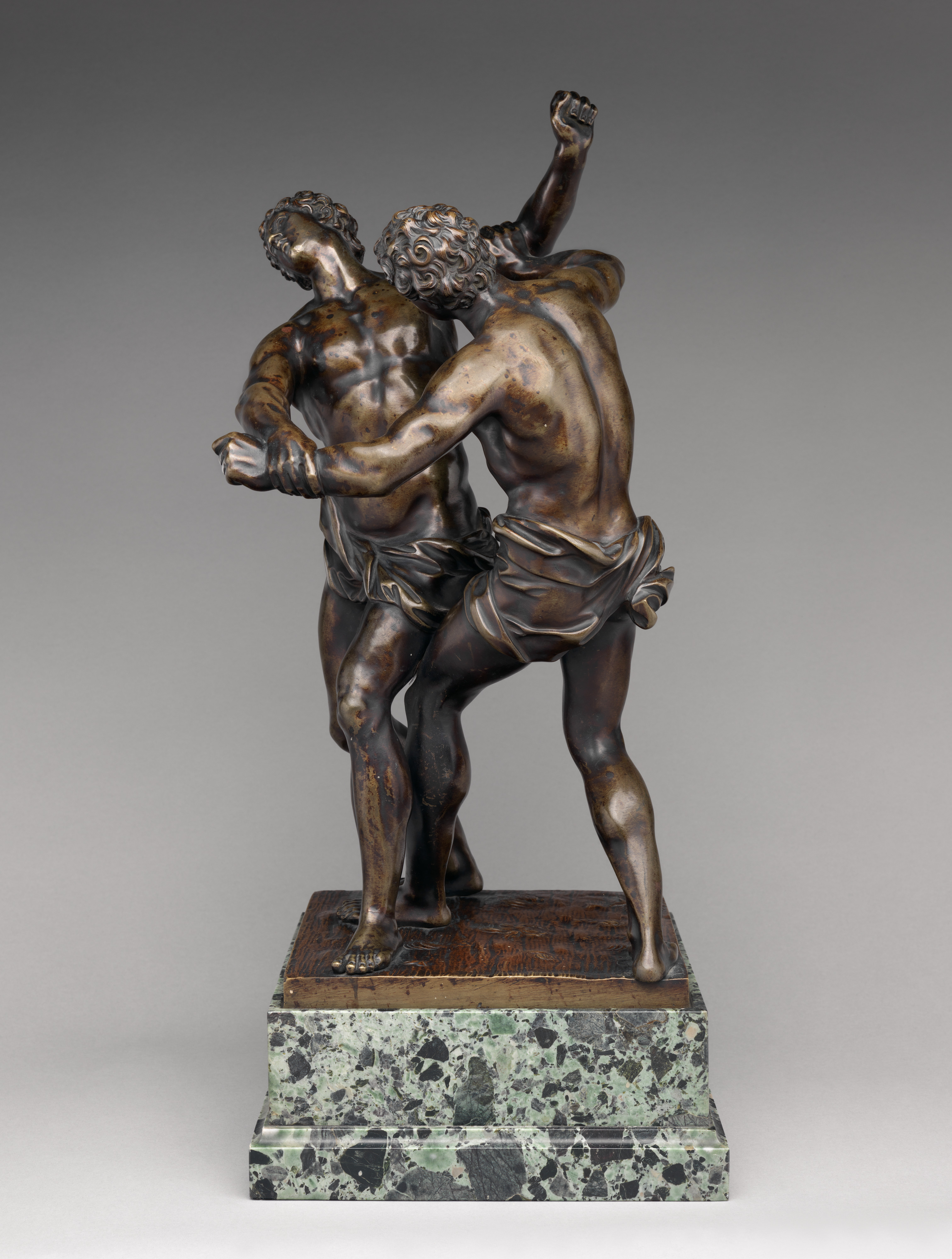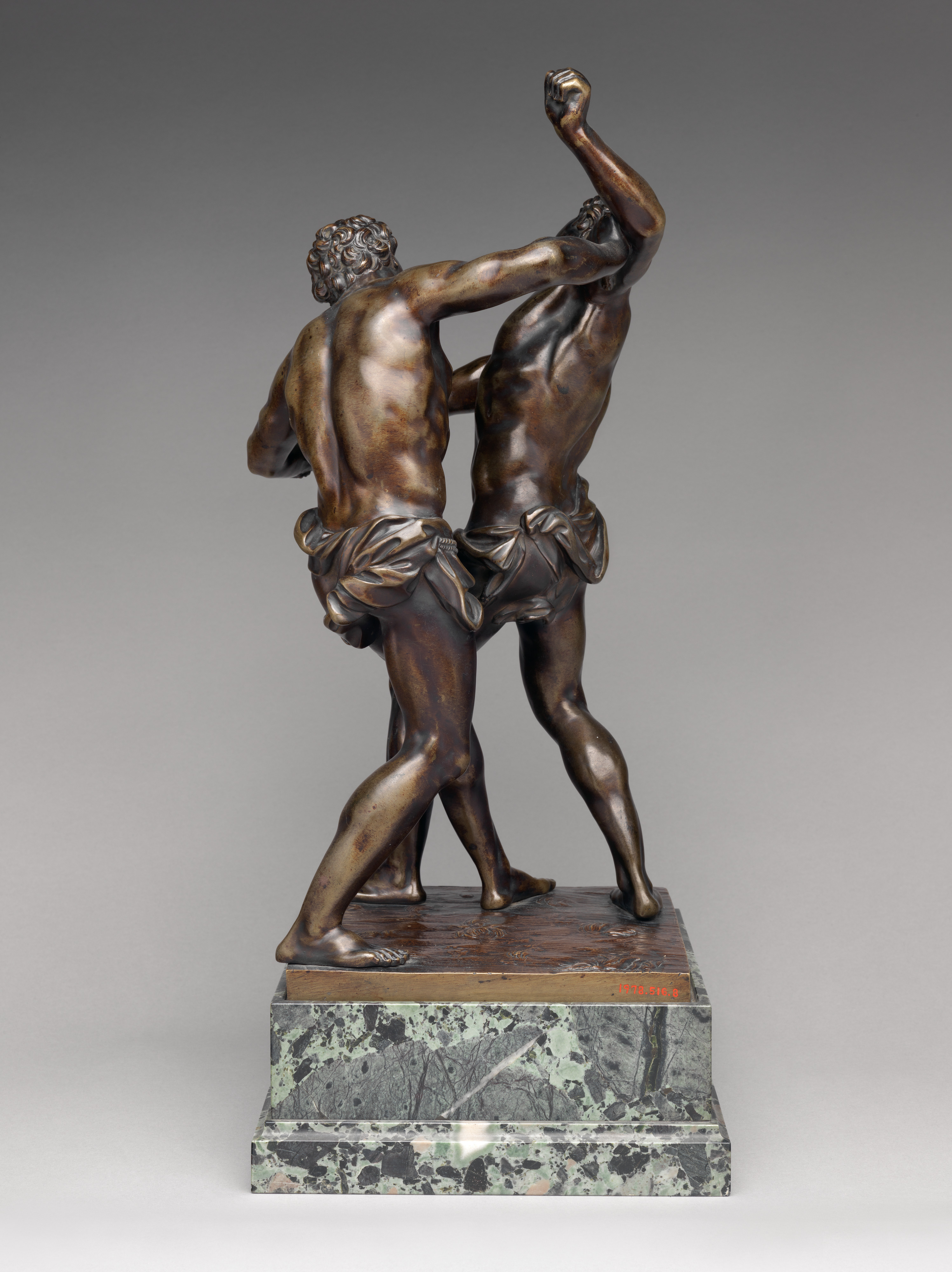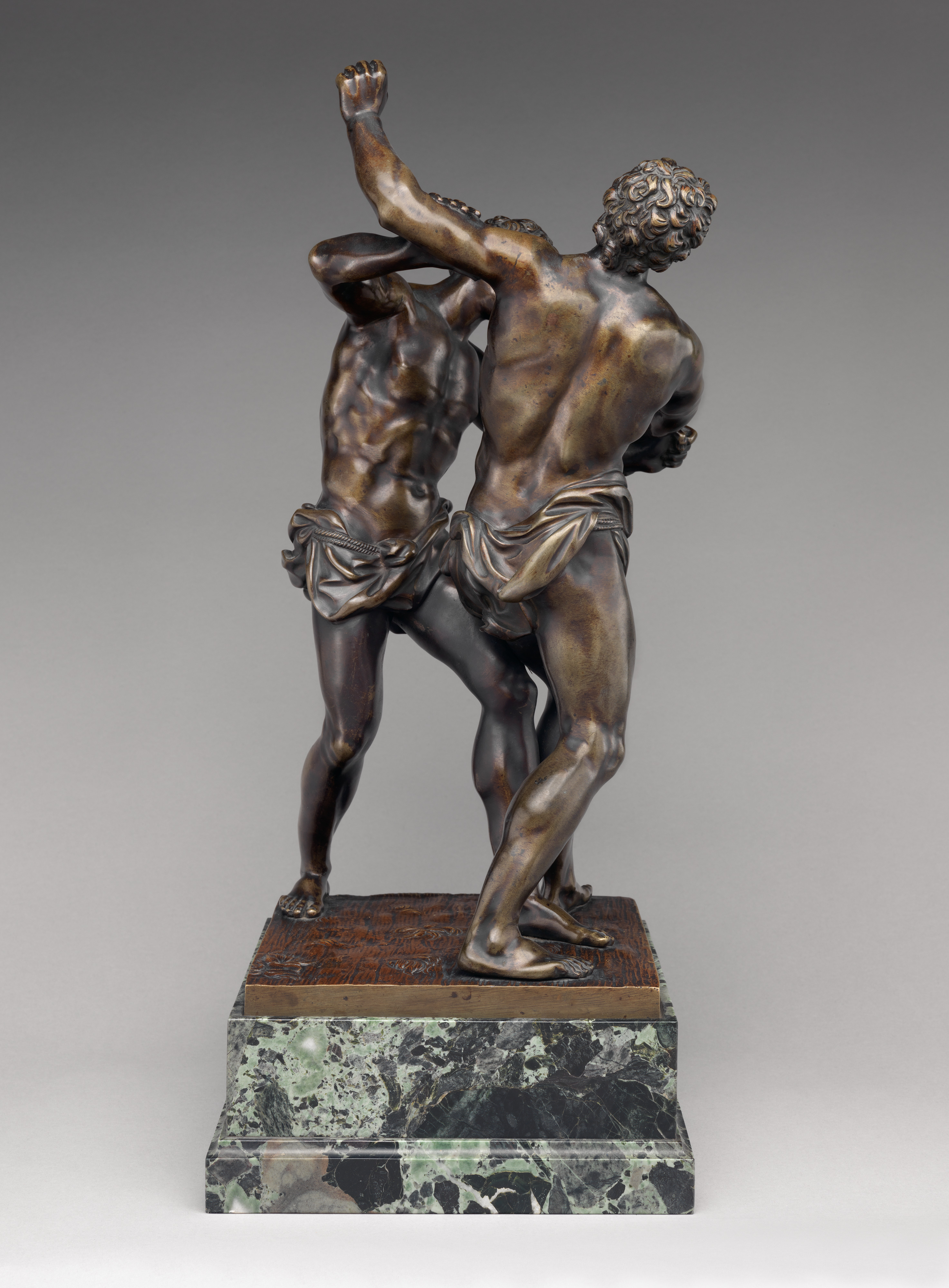Two men wrestling
Workshop of Ferdinando Tacca Italian
Not on view
The finish and stance of these naked wrestlers—one group of men, covered in loincloths, the other women—point to a late Baroque chronology, possibly the last quarter of the seventeenth century. The groups differ in the way the bodily motion is conceived: balanced and rhythmical in the men’s contest, sclerotic and stiff in the women’s. Despite its in-the-round character, the male group privileges the frontal view, from where both faces can be appreciated. The female bronze must be viewed from two distinct angles—frontal and from the right—to observe the two faces.
Our bronzes are among the rare ones to have apparently survived as a pair.[1] The female group and its variants is encountered more frequently.[2] After earlier proposals of French, Italian, or German authorship, an attribution to Ferdinando Tacca’s workshop was assigned to a cast sold at auction in the 1970s, and a male group in the Hermitage is given to Tacca’s circle.[3] This attribution is difficult to sustain. The soft and generous loincloths of the wrestling men bear little resemblance to Tacca’s sharp, linear drapery, and the swirling locks of hair are vaguely akin to Alessandro Algardi’s designs (paradoxically, thus, more Roman than Florentine). While the academic flavor of the male figures—faultless anatomy, curly hair, draped genitalia—evoke the Italian manner, the features of the female group strongly suggest production on the other side of the Alps, in particular the schematic, rather lumpy bodies and odd details such as the tuft of hair on the left wrestler’s forehead. If we accept that the groups were cast as a pair by the same founder, they are likely a product of a northern European workshop. Support for this may be found in an earlier group of women wrestlers now attributed to the German sculptor Leonhard Kern.[4] Moreover, two female groups are documented in late seventeenth- and early eighteenth-century French and German collections.[5] It is worth noting that many of the female groups, such as a much smaller version in Baltimore,[6] are partially clad in abundant loincloths.
-FL
Footnotes
(For key to shortened references see bibliography in Allen, Italian Renaissance and Baroque Bronzes in The Metropolitan Museum of Art. NY: The Metropolitan Museum of Art, 2022.)
1. Both are brasses, although of differing composition. F. Carò/AR, September 15, 2021. 2. London 1976, p. TK. The relationship between the male and female groups was noted in Tietze-Conrat 1918, pp. 61–63. For a list of similar groups, see Androsov 2017, p. 300 (with no mention of our bronze).
3. Christie’s, London, December 4, 1973, lot TK; Androsov 2017, p. 300, cat. 160.
4. MMA, 1982.60.121; see James David Draper in Linsky 1984, p. 172, no. 91.
5. André Le Nôtre, Paris (see Guiffrey 1911), and Augustus the Strong, Dresden (see Holzhausen 1939, p. 185).
6. Walters Art Museum, 54.647.
Due to rights restrictions, this image cannot be enlarged, viewed at full screen, or downloaded.
This artwork is meant to be viewed from right to left. Scroll left to view more.






